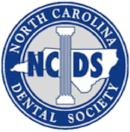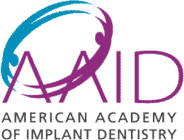
In honor of World Chocolate Day on July 7th, we thought we’d take a look at one of the world’s favorite confections and the impact it has on your dental health. The question of how chocolate affects your teeth is more complex than you might think, as chocolate is a whole food that plays a big role in our lives. In order to really understand how chocolate affects teeth, we’ll need to look at chocolate, its nutritional makeup, and how you can best enjoy while still supporting your dental health.
Chocolate isn’t just a sweet and rich flavor. Nutritionally there’s a lot going on inside your favorite piece. While actual values may vary from brand to brand or recipe to recipe, generally contains the following beneficial components that help support your teeth and overall health. A 100 gram/3.5-ounce piece of dark chocolate provides:
- 11 grams of fiber
- 67%DV of Iron
- 58%DV of Magnesium
- 89%DV of Copper
- 98%DV of Manganese
- 25%DV of Riboflavin(Vitamin B2)
- 29%DV of Vitamin B12
- Significant amounts of potassium, phosphorus, zinc and selenium
That’s a lot of good nutritional content in a very small package, and chocolate can be a beneficial addition to your diet. Studies have shown a link between moderate consumption and a decreased chance of high blood pressure. The vitamins and minerals contained in chocolate support many vital functions, including healthy teeth. Chocolate has a lot to offer!
This good news about chocolate’s nutritional value and how it affects teeth is tempered by a few things. Just as chocolate contains ample vitamins and minerals, it also contains a lot of fat and sugar. Neither of those is good for us in excess, and thus intake should be moderated. From the perspective of preserving dental health, sugar is one of the biggest issues in our diets. Excess sugar from any source can fuel the growth of bacteria, which can, in turn, lead to a number of dental problems including gum disease, cavities, and eventually tooth loss. So, how can we reap the benefits of chocolate and enjoy it while still keeping our teeth and gums healthy?
There are a couple of key approaches here. Chocolate, like all foods, should be consumed in moderation. It’s a treat, a dessert, not a staple food item. It’s an occasional addition to a healthy diet rich in vegetables and lean proteins. In addition to limiting the intake of chocolate, we all need to be mindful that sugar acts quickly. As with all sweets, rinsing the mouth out after eating and then brushing and flossing as soon as possible are important steps in keeping your teeth and gums healthy. Regular and effective brushing and flossing routine along with the use of mouthwash and a good diet are the keys to long-term dental health. Likewise, trips to the dentist for exams and cleanings are a must to keep your teeth looking and feeling their best.
So in summary: chocolate has a lot going for it: delicious, rich in nutrition, and contains vitamins and minerals that are good for your teeth. However, as a sweet, fatty food, it does need to be consumed in moderation and with an eye on your oral health. We hope this information helps you to better celebrate World Chocolate Day and to enjoy it while remaining mindful of how chocolate affects teeth.




